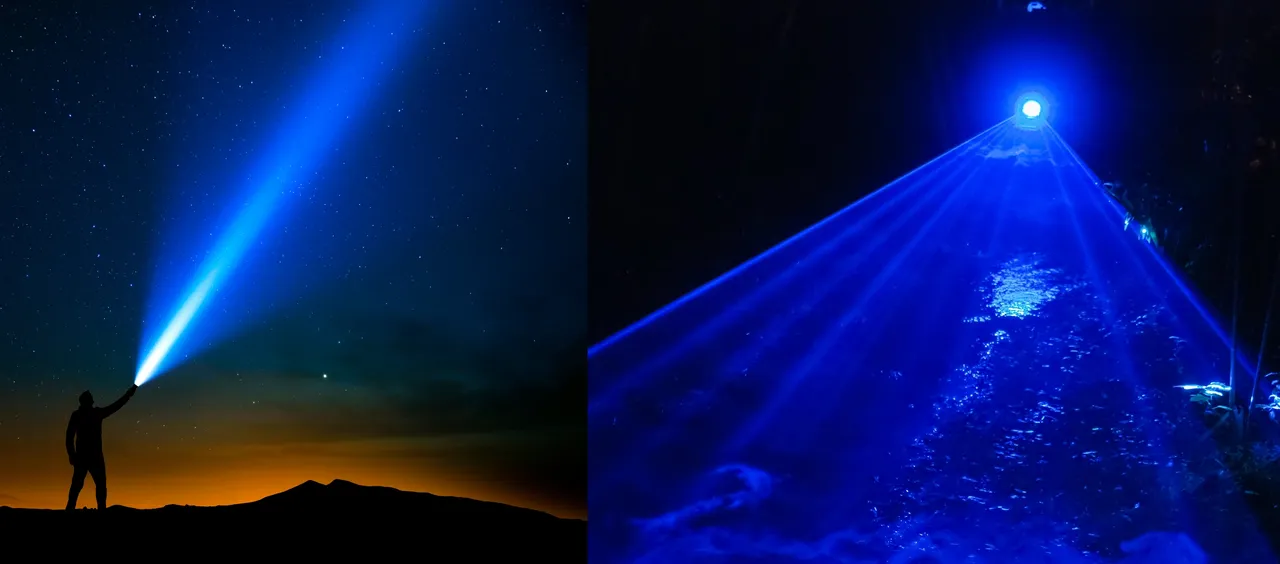So much of our learning and growth begins with self-awareness. Whether it’s part of my personal evolution or my work with clients, I love pulling back the curtain on some undiscovered aspect of existence and generating a shift in perspective by examining it under the illuminating light of flashlights and floodlights.
Today I want to focus on how these tools can amplify your awareness and expand your thinking.
Your Flashlight
In her book Peak Mind, Amishi Jha offers a powerful metaphor for attention. She likens our attention to a flashlight. Imagine you are in a dark room, and you shine your flashlight on a particular object. That object is all you can see – the darkness filters out everything else. We are in this state when we deliberately focus our attention on a specific object, person, or task.
The flashlight metaphor helps us understand why multi-tasking is a myth. When we sit in a meeting and attempt to pay attention to the meeting and respond to emails simultaneously, we think we are multi-tasking. What we are really doing is task-switching. We rapidly switch back and forth between the two tasks. You point your flashlight at the email, swing it over to the meeting, then back to the email, rapidly switching your attention back and forth. As you probably know, this is horribly inefficient.
As you digest the flashlight metaphor, consider situations when you divide your attention across multiple things. When you examine these moments, you will likely realize how ineffective the strategy is. Look for solutions that allow you to point your flashlight directly at one thing and leave it there for an extended period, finishing one task before turning your attention to another.
Your Floodlight
In contrast, there are times when focusing our attention on a specific thing is counter-productive. When we want to engage in big-picture thinking, Jha offers a floodlight metaphor. A flashlight in a dark room enables us to focus our attention deliberately on a single object. In contrast, a floodlight allows us to take in the whole scene. No one object gets our focused attention, but we can scan the environment in totality.
You’ve likely heard the phrase tunnel vision. When we have tunnel vision, we are so focused on a single solution we are not open to other possibilities. This is when our flashlight works against us, and a floodlight would serve us better.
A second awareness exercise I offer is to look for those opportunities where you are too focused on a single object or solution. When you find yourself in this state, shift from your flashlight to your floodlight to get up in the balcony and see the big picture.
Your Brain
In my neuroscience and coaching class, I am learning how these metaphors map to our brains. They align with the difference between our brain’s left and right hemispheres. I’ll defer to my teacher Ann Betz‘s blogs for a more detailed explanation of the two hemispheres here and here.
When we use our flashlight, we engage the brain’s left hemisphere. This hemisphere is excellent at filtering out what isn’t important for the task at hand so we can devote our attention to the details.
When we use our floodlight, we engage the brain’s right hemisphere. This hemisphere steps back and looks at the big picture. We “take it all in” and get the gestalt of it all.
In the earlier days of humanity, we relied on our right hemisphere to scan the area around us, watching for threats (or prey if we were hunting). If we identified a threat, such as a tiger approaching, our left hemisphere would focus on that threat and take action to keep us safe.
Integration
As leaders (and humans), we aim to integrate the two hemispheres, enabling us to move fluidly between the two as needed.
I often work with leaders who see themselves as either a strategy or an execution person. The strategy person tilts toward their right hemisphere. The execution person tilts toward their left. Coaching often focuses on strengthening the other area, balancing out the tilt, and leading to a more integrated state.
I often see this play out as someone improves their public speaking abilities over time. I have seen many individuals plan their presentation, memorize it word-for-word, step up to the podium, and do their best to recite from memory or read from their notes. I started this way. This approach tilts to the left hemisphere. We are shining our flashlight on the presentation’s content and focusing on delivering it as planned, filtering out everything else.
As we get more comfortable with our material and public speaking in general, we can engage our right hemisphere and speak from a more integrated perspective. As we deliver our presentation, we shine our floodlight on the audience, reading faces and shifting our message based on the connections we observe through our right hemisphere. Our flashlight is still at work as we deliver our message, but our floodlight is also engaged, helping us adjust the message in the moment.
Putting It Into Practice
To help develop your self-awareness, I encourage you to start a Journal of Awareness. I’ll invite you to update it regularly, so select a journal or notebook that feels special. Use it to write about moments where you:
- Shined your flashlight deliberately and effectively.
- Switched your flashlight between multiple objects or tasks.
- Took a step back, softened your gaze, and used your floodlight.
- Found yourself gracefully flowing from flashlight to floodlight in an integrated fashion.
As you bring these flashlight and floodlight moments into your awareness and journal about them, you’ll build your attention and awareness muscles. Over time you’ll find yourself more comfortably integrating both hemispheres of your brain.
If you’d like to learn more techniques to engage, balance and integrate your hemispheres, schedule time with Josh.
Want to comment? Join the conversation on LinkedIn.

